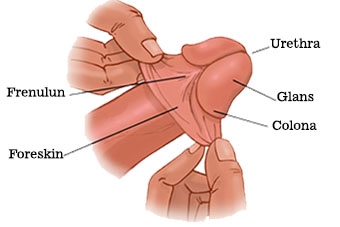Male circumcision, a procedure involving the surgical removal of the foreskin from the penis, is a topic that sparks various discussions, including considerations of its potential risks.
While it is generally considered a safe procedure when performed by trained medical professionals in sterile conditions, like any surgery, it does carry some risks that individuals and parents should be aware of:
- Bleeding: Bleeding is one of the most common risks associated with circumcision. In most cases, this is minor and stops on its own or with minimal intervention. However, excessive bleeding can occur in rare cases and may require medical attention.
- Infection: Any surgical procedure carries a risk of infection. Proper sterile techniques can minimize this risk, but infection at the site of the circumcision can occur. Signs of infection include increased redness, swelling, warmth, or discharge from the wound.
- Pain and discomfort: Pain during and after the procedure is common, especially during the healing process. Infants may be given local anesthesia to minimize pain, but discomfort can persist for a few days post-surgery.
- Risk of complications: While rare, complications can include damage to the penis, excessive skin removal, or problems with the healing process. Careful technique and post-operative care can reduce these risks.
- Psychological effects: In some cases, circumcision can lead to psychological stress or trauma, especially if the procedure is not performed under appropriate medical conditions or without consent in adulthood.
- Risk of improper healing: If not cared for properly, the circumcision wound can become irritated, leading to delayed healing or scarring.
- Rare risks: These can include reactions to anesthesia if used, or very rarely, more serious complications such as meatal stenosis (narrowing of the urethral opening).
It’s important to note that the overall incidence of complications from circumcision is low when performed by trained professionals. The decision to circumcise should consider potential benefits (such as reduced risk of certain infections or easier hygiene) as well as these risks. Parents should discuss with healthcare providers to understand these risks and benefits before making a decision.





Comments